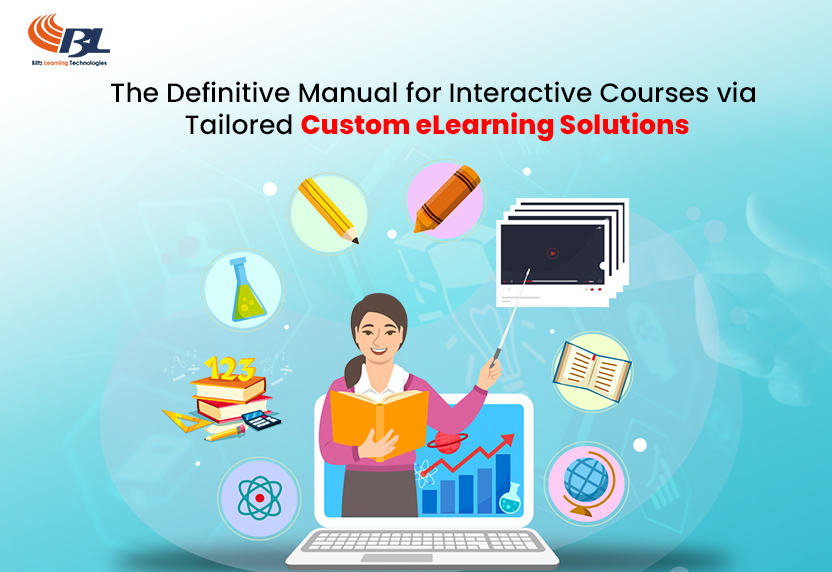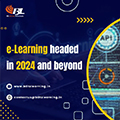
Blog
- Home
- Blog

16May
Unveiling the Definitive Manual for Interactive Courses via Tailored Custom eLearning Solutions
Introduction:
In today's fast-paced world, learning has transcended traditional boundaries. With the advent of technology, education has become more accessible, interactive, and personalized than ever before. One of the most impactful innovations in the realm of education is the rise of tailored custom eLearning solutions. These solutions offer a myriad of benefits, including flexibility, scalability, and the ability to cater to diverse learning needs. In this definitive manual, we delve into the intricacies of interactive courses delivered through custom eLearning solutions, exploring their significance, implementation strategies, and best practices.
Understanding Tailored Custom eLearning Solutions
Tailored custom eLearning solutions are precisely what their name suggests – personalized learning experiences designed to meet the specific needs of learners and organizations. Unlike one-size-fits-all approaches, these solutions are crafted meticulously, taking into account factors such as learners' preferences, learning styles, and organizational objectives. By leveraging technology, content developers can create engaging, interactive, and immersive learning experiences that resonate with learners on a deeper level.
The Significance of Interactive Courses
Interactive courses lie at the heart of effective eLearning solutions. They go beyond traditional text-based learning materials, incorporating multimedia elements, simulations, quizzes, and gamification to foster engagement and knowledge retention. Interactive elements not only make learning more enjoyable but also enable learners to apply concepts in real-world scenarios, thereby enhancing their understanding and skill acquisition.
Key Components of Tailored Custom eLearning Solutions

Needs Assessment: : The first step in developing tailored custom eLearning solutions is conducting a comprehensive needs assessment. This involves identifying the learning objectives, target audience, existing knowledge gaps, and preferred learning modalities. By understanding these factors, developers can tailor the content and delivery methods to suit the unique requirements of learners.
Content Development: Once the needs assessment is complete, the next step is content development. This phase involves creating engaging and relevant learning materials, which may include interactive videos, simulations, e-books, infographics and assessments. Content should be structured in a logical manner, with clear learning objectives and progression paths.
Technology Integration: Technology plays a crucial role in delivering custom eLearning solutions. Learning management systems (LMS), authoring tools, multimedia software, and virtual reality (VR) platforms are some of the technologies utilized to create immersive learning experiences. Integration of these technologies should be seamless, ensuring a user-friendly interface and optimal performance across devices.
Feedback and Iteration: Continuous feedback is essential for refining and improving eLearning solutions. Through surveys, quizzes, and assessments, learners can provide valuable insights into the effectiveness of the course materials and delivery methods. Developers can use this feedback to make iterative improvements, ensuring that the learning experience remains relevant and engaging.
Implementation Strategies
Implementing tailored custom eLearning solutions requires careful planning and execution. Here are some strategies to consider:

Collaborative Approach: Involve stakeholders, subject matter experts, and learners in the development process to ensure alignment with organizational goals and learner needs.
Pilot Testing: Before full-scale deployment, conduct pilot tests to identify any potential issues or areas for improvement. This allows for refinements to be made before the solution is rolled out to a wider audience.
Training and Support: Provide adequate training and support to both learners and instructors to maximize the effectiveness of the eLearning solution. This may include tutorials, user guides, and technical assistance.
Monitoring and Evaluation: Continuously monitor learner progress and evaluate the effectiveness of the eLearning solution against predefined metrics. Use this data to make data-driven decisions and enhancements.
Best Practices for Success
To ensure the success of tailored custom eLearning solutions, consider the following best practices:
Personalization: Tailor learning experiences to the individual needs and preferences of learners, providing them with control over their learning journey.
Accessibility: : Ensure that the eLearning solution is accessible to all learners, including those with disabilities or limited access to technology.
Engagement: Incorporate interactive elements, storytelling, and gamification to keep learners engaged and motivated throughout the course.
Feedback Loop: Establish a feedback loop to gather input from learners and stakeholders, using this information to continuously improve the eLearning solution.
Scalability: Design the eLearning solution with scalability in mind, allowing for seamless expansion to accommodate growing learner populations or evolving organizational needs.
Conclusion:
Tailored custom eLearning solutions represent a paradigm shift in the way education is delivered and consumed. By leveraging technology and personalized learning experiences, organizations can empower learners to acquire new skills, enhance performance, and drive business success. However, achieving success in eLearning requires careful planning, collaboration, and adherence to best practices. With the definitive manual outlined above, organizations can embark on their eLearning journey with confidence, knowing they have the tools and knowledge to create impactful and engaging interactive courses.

Neha Tyagi
About authorAs a Digital Tech professional with significant experience, Neha Tyagi has mastered the art of teamwork. Throughout her career, she maintains a commitment to continuous learning. Currently, Neha is delving into innovative technologies aimed at transforming businesses.



Leave a comments